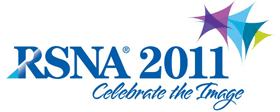
Abstract Archives of the RSNA, 2011
Shota Yamamoto MD, Presenter: Nothing to Disclose
Ronald L. Korn MD, PhD, Abstract Co-Author: Scientific Advisory Board, Cellgenix LLC
Scientific Advisory Board, General Electric Company
Scientific Advisory Board, ImageneDx
Medical Director, Imaging Endpoints
Daniel Dawson Maki MD, Abstract Co-Author: Nothing to Disclose
Christopher William Migdal, Abstract Co-Author: Nothing to Disclose
Michael D. Kuo MD, Abstract Co-Author: Consultant, Confluence Life Sciences LLC
Stockholder, Confluence Life Sciences LLC
Stockholder, Imagenedx Technology Corp
Consultant, Imagenedx Technology Corp
Breast cancer, like many other cancer types, are thought to develop from aberrations in cell signaling pathways, genetic mutations and overall genomic instability. New technologies, such as microarrays, inform us of the molecular diversity underlying cancer by allowing genome scale analysis of gene expression patterns. A number of recent global gene expression profiling studies in breast cancer have validated novel gene expression signatures correlated with clinical outcomes. In this pilot study, our aim was to apply radiogenomic analysis to identify non-invasive MR imaging surrogates of breast cancer related gene expression signatures in order to discover potentially significant imaging biomarkers.
Ten female patients with a histopathologic diagnosis of breast cancer, who underwent breast MRI examinations and microarray analysis (~54,000 probes) were included in the study. Two radiologists evaluated each patient across twenty four predefined imaging phenotypes. Bioinformatics analyses using gene set enrichment analysis and unsupervised hierarchical clustering were performed to correlate the microarray data to the imaging scores.
The tumor enhancement profile trait of the lesion on breast MRI was strongly correlated to the interferon breast cancer subtype (p< 0.01). We also discovered six imaging traits (lesion morphology, constellation features, contrast enhancement kinetics, T2 signal strength and stromal alterations) correlated (FDR < 0.25) with prognostic gene expression signatures associated with poor outcome in other independent studies (Van’t Veer’s 70 gene poor prognosis, Wound response, and hypoxia metagene).
Radiogenomic analysis provides a novel method of utilizing breast cancer imaging phenotypes to explain the underlying biology of each individual lesion. Given that a number of molecular subtypes have been established as prognostic and predictive markers for patients, it may be possible to discover imaging phenotypes that correlate with such findings and better aid in the overall diagnosis of cancer without the requisite need for tissue.
This pilot study demonstrates a possible relationship between breast gene expression and MRI descriptors in an effort to identify clinically useful biomarkers.
Yamamoto, S,
Korn, R,
Maki, D,
Migdal, C,
Kuo, M,
Radiogenomic Analysis of Breast Cancer Utilizing Gene Expression Profiling and Advanced MRI. Radiological Society of North America 2011 Scientific Assembly and Annual Meeting, November 26 - December 2, 2011 ,Chicago IL.
http://archive.rsna.org/2011/11005494.html

